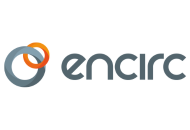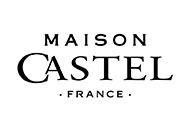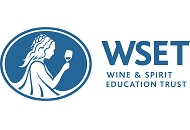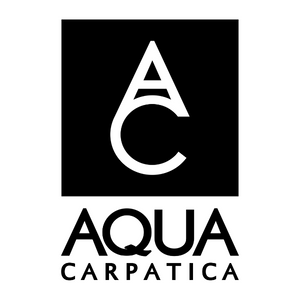This is the view of Primož Rojac, the Slovenian lawyer behind the RURALL brand.

Here is the e-label for his red wine, Dobro rdeče 2018. As the wine is from the 2018 vintage, he doesn’t have to display information on composition, allergens, energy value and nutritional value or a QR code leading to a page of relevant information – but he does. The new regulations, applicable from December 8, 2023, say part of the information must be provided directly on the bottle of wine, but some required information can also be provided via electronic means. The most suitable is the electronic label, presented on the bottle via a QR code. After scanning it with a mobile phone, the customer will be shown an electronic label belonging to a specific wine.
The new regulations state:
- Information on energy value must be indicated on wine labels using the ‘E’ symbol and must be stated per 100ml portion. All potential allergens must also be prominently displayed on the wine label and listed under the word ‘Contains’.
- Information on composition and nutritional value must also be provided but can be accessed via an electronic label represented by a QR code on the bottle. After scanning it, the customer is redirected to a specialised website with the required information. The law is very strict about these dedicated webpages: they are not allowed to present any marketing or sales material, and no tracking of the online behaviour of the consumers by way of cookies and analytics.
Primož believes this response to the e-label for Dobro rdeče 2018 “serves as an innovative approach to understanding and responding to consumer preferences in this evolving landscape”.
However, he admits, it’s not entirely compliant with the new EU Regulation (2021/2117), as it’s hosted on rurall.com, a site with analytics.
“This is a strategic choice,” Primož tells me, as the wine – from the 2018 vintage – “is not yet required to adhere to the new regulations. However, by hosting the e-label in this manner, we gain valuable insights into consumer interests. Are people genuinely interested in the nutritional value of wine or is this just a legislative formality? Through this approach, we aim to gather data that could be invaluable not only for us but also for regulators. It’s a way to gauge real consumer interest and inform future decisions in the wine industry.”
Another Slovenian, Boris Henezi, also believes e-labels are an opportunity to reach new consumers and offer a way to enhance your brand’s story. He is working for a company based in Slovakia which offers help to wine producers around the world to make compliance to the new regulations easier.
Here’s what the two Slovenians told Canopy
‘This legislation is ultimately beneficial’
Primož Rojac, founder of RURALL
“In the ever-evolving landscape of the wine industry, the new EU rules regarding detailed nutritional information on wine labels included into Regulation (EU) No 1169/2011 on the provision of food information to consumers, stands as a landmark change. They require a nutrition declaration and a list of ingredients on the labels of wine products.
“I see these new EU rules as a significant step towards greater transparency in the wine industry. This change reflects a growing demand among modern consumers for more information about what they consume. However, it’s crucial to recognise that wine consumers are not a homogeneous group.
“On one end of the spectrum, we have consumers who view wine primarily as a commodity and are keen on details like calorie count. While the actual difference in calorie content among dry wines is minimal, this information caters to a more health-conscious demographic. On the other end, there are consumers who appreciate wine as a craft product. For them, the story, the craftsmanship, and the heritage of the wine are more important than its calorie content.
“This legislation, though initially posing a financial and organisational challenge, especially for smaller producers, is ultimately beneficial. It demands more transparency from winemakers, which can help distinguish craft wines made with minimal intervention from mass-produced varieties. Craft winemakers, who are often more conscientious about their production methods, stand to benefit in the long run as this transparency highlights the quality and care put into their wines.
“I have recently been discussing with many winemakers and restaurateurs who are not even aware of these new rules and are obviously not happy when they learn about them. However, I believe those crafting wines with minimal intervention will benefit in the long run.”
‘Here lies an opportunity many fail to recognise’
Boris Henezi, business development executive at Siplabel
“The new legislation makes it seem that the amount of sugar is more important to the modern consumer than how many generations the family has been producing the wine for.
“But digitalization does not have to be bad, even in an industry as rich with traditionalism as winemaking. The digital transformation of wine insignia enables wine producers to speak with a more nutritionally aware audience, without compromising the aesthetics of their wine labels. What some view as unnecessary cost and complication is, for others, a great channel to communicate with modern audiences.
“The new European legislation regarding nutrition information on the wine bottles was in the making for quite a few years and, even though most countries have further adjusted it and the timing of its introduction, we will gradually start seeing more and more wine bottles enriched with a small QR code, leading us to the dedicated webpage which will provide all the nutritional information along with allergens and ingredients. The law is very strict about the dedicated webpages not being allowed to present any other marketing or sales material, and no tracking of the online behaviour of the consumers by way of cookies and analytics.
“But here lies an opportunity many fail to recognise under the pressure of necessity. You can include details about the grape variety, altitude and soil – important details in the storytelling and creating the relationship between the brand and the oenophile on a seperate QR code. The presentation accessible by second QR code can also contain information about maceration, fermentation and casks along with all other qualities which can be greatly enriched with pictures and videos.
“At the end of the day, it is entirely up to you, whether you decide just to abide by the law and fulfil the minimum requirements or use this opportunity of modernisation and digitalization to further enhance your brand and enrich your relationship with your buyers.”
Siplabel offers a simple solution to wine label digitalization. siplabel.com is a platform where you can create EU-compliant QR codes for your wines, with translations for all 24 official EU languages. It also has a simple-to-use nutrition values calculator, allowing you to produce the e-label in minutes.
How to calculate the energy value of wine
According to the regulation, there are two acceptable methods of energy calculation:Method 1 – Formula calculator with conversion factors based on sugar, alcohol and several other parameters;
Method 2 – Using a general average value for individual types of wine, such as red-dry, sparkling-sweet, etc.

 English
English French
French










.png)
